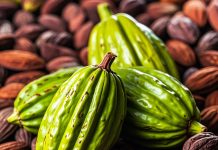 Numerical modeling on the effect of micro-aeration on the thermal properties of chocolate.
Numerical modeling on the effect of micro-aeration on the thermal properties of chocolate.
The thermal properties, such as thermal conductivity, specific heat capacity and latent heat, strongly influence the melting and solidification of chocolate. Accurate prediction of these properties in micro-aerated products, with varying levels of porosity, is beneficial for understanding and control of heat transfer mechanisms during their manufacturing and oral processing. The former process is important for the final quality of chocolate, and the latter is associated with sensorial attributes.
This study, carried out by a group of British researchers (Bikos et al., 2022), focused on the development of a novel multiscale finite element model (FEM) to accurately predict the temporal and spatial evolution of temperature across chocolate samples with a porosity ranging from 0% to 15%. The model is evaluated via heat transfer experiments at temperatures varying from 16°C to 45°C.
The results suggest that the rate of heat transfer within the micro-aerated chocolate decreases significantly as the porosity of the product increases. More specifically, the thermal conductivity decreases by 20%, while the specific heat capacity increases by 10% for 15% micro-aerated chocolate, suggesting that micro-pores act as thermal barriers to heat flow. In conclusion, the authors argue that the latter result is rather unexpected and must be considered for the development of micro-aerated chocolate products with specific structural and sensory characteristics.
Use of 2.5-diketopiperazines in chocolates as a marker of the variety and quality of cocoa beans.
2.5-diketopiperazines are cyclic dipeptides found in a wide variety of food products. The aim of a recent study, carried out by a group of Swiss researchers (André et al., 2022), was to evaluate the use of these compounds in chocolate as a marker of the variety and post-harvest treatments of cocoa beans. For this purpose, a set of 33 dark chocolates from different cocoa varieties were processed by liquid chromatography and tandem mass spectrometry (HPLC-MS/MS); the spectral data were then analyzed using a computational strategy known as molecular networking.
With this approach 18 different diketopiperazine were identified and quantified (some of which were identified and quantified for the first time). The molecular network allowed the clear visualization of differences between samples. The developed method is a valuable tool to visualize the chemical diversity between craft and industrial chocolates: in fact, the presence of two particular diastereoisomers in classic chocolates indicates that the industrial processing of beans was conducted under higher roasting conditions. In conclusion, the authors argue that further insights are needed to improve the performance of this tool, for example, by analysing cocoa beans all along the transformation process of beans to chocolate bar.
References: Bikos et al., Food & Function, 13, 2022, 4993-5010; André et al., Heliyon, 8, 2022, e10770.



